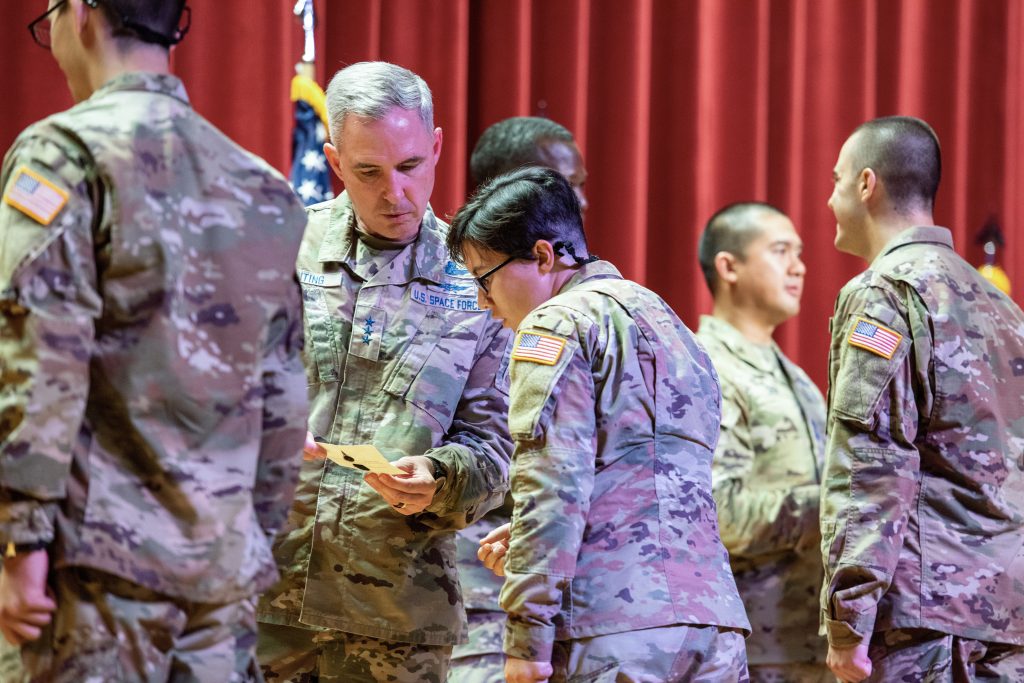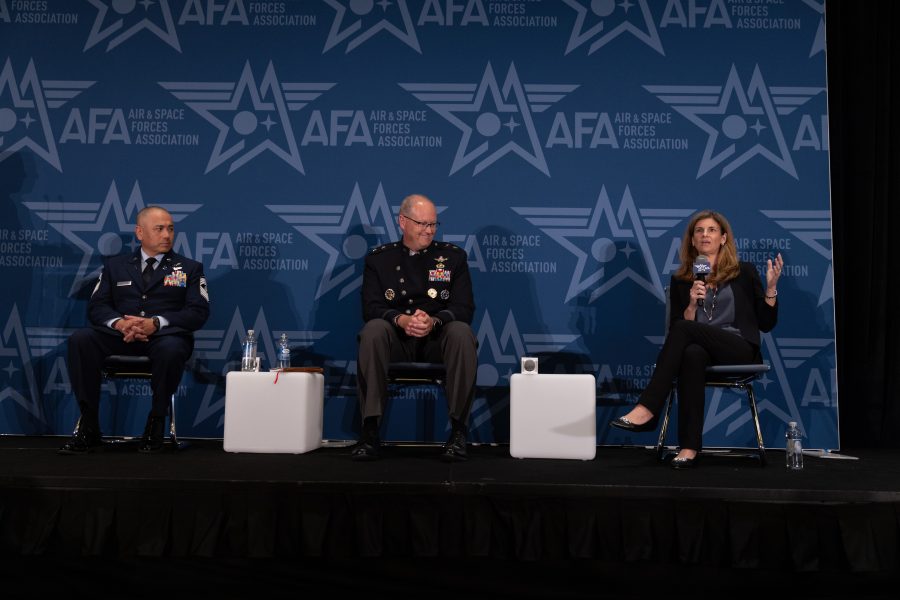Looking to fight “inertia,” Space Force leaders said at AFA’s Air, Space & Cyber Conference they want to build on the young service’s momentum and keep building a culture unique among the military services.
Chief of Space Operations Gen. B. Chance Saltzman has made “Amplifying the Guardian Spirit” one of his key lines of effort for the service, and in a Sept. 12 panel discussion, deputy chief of space operations for human capital Katharine Kelley said the use of words like “amplification” and “spirit” speaks to the need to keep moving forward and not get bogged down by standard Pentagon bureaucracy and conventions.
“There’s much inertia institutionally against startups. We need to continue and build upon momentum as a new service,” said Kelley.
Earlier this month, the Space Force announced its new mission statement, formulated with direct input from Guardians: “Secure our Nation’s interests in, from, and to space.” The process and end result were both emblematic of USSF’s distinctive culture and identity, but the youngest branch of the military still has some challenges and opportunities for securing its own path forward.
One of the most distinctive and high-profile examples of the way the Space Force has sought to build its own culture is its “patching ceremony”—Guardians at Basic Military Training are gifted patches and personal notes from a Guardian who wore that patch, building morale, tradition, and lineage.

Even the way that tradition came about is indicative of the Space Force’s unique spirit, said Chief Master Sgt. James Seballes, senior enlisted leader of Space Training and Readiness Command, because it doesn’t stem from the leadership but rather emerged as a grassroots initiative from Guardians themselves.
“That was the team that was planning and building the curriculum that came together. That was not just enlisted Guardians, that was also civilian and officer Guardians that helped come up with the idea,” Seballes said.
Seballes’ reference to civilian Guardians spotlighted another unique aspect of Space Force culture—its inclusion of civilians and contractors who work for the branch. Leaders said they recognize every decision made impacts the entire force, especially due to the relatively small size of the branch.
This can be beneficial, according to Maj. Gen. Steven Whitney, director of staff. Whitney pointed out the personalized mentorship and one-on-one conversations that characterize the service’s approach to leadership development. This personalized feedback, which goes both ways, ensures that leaders are not only imparting knowledge but also learning from their subordinates.
Leaders hope such development will help the service in retaining talent over time. In addition, Seballes said Guardians may be more likely to stay based on the Space Force’s focus on giving members a voice and streamlining processes for quicker problem-solving. In this regard, its small size can be another significant advantage.
“For instance, I’ve seen things that take lengthy amount of time to be processed in other branches but in our department is a lot shorter process. That saves a lot of time and energy and resources for problem solving,” he said.
Kelley also noted the service hopes to boost retention by investing in Guardians. This includes designing ecosystems to assess individual skills and determine suitable career paths, whether within the branch or as civilians. Kelley pointed out that continuous learning and skill development are vital components, and she stressed the importance of amplifying the expertise and unique experiences of each role within the USSF to create a stronger and more cohesive team.
